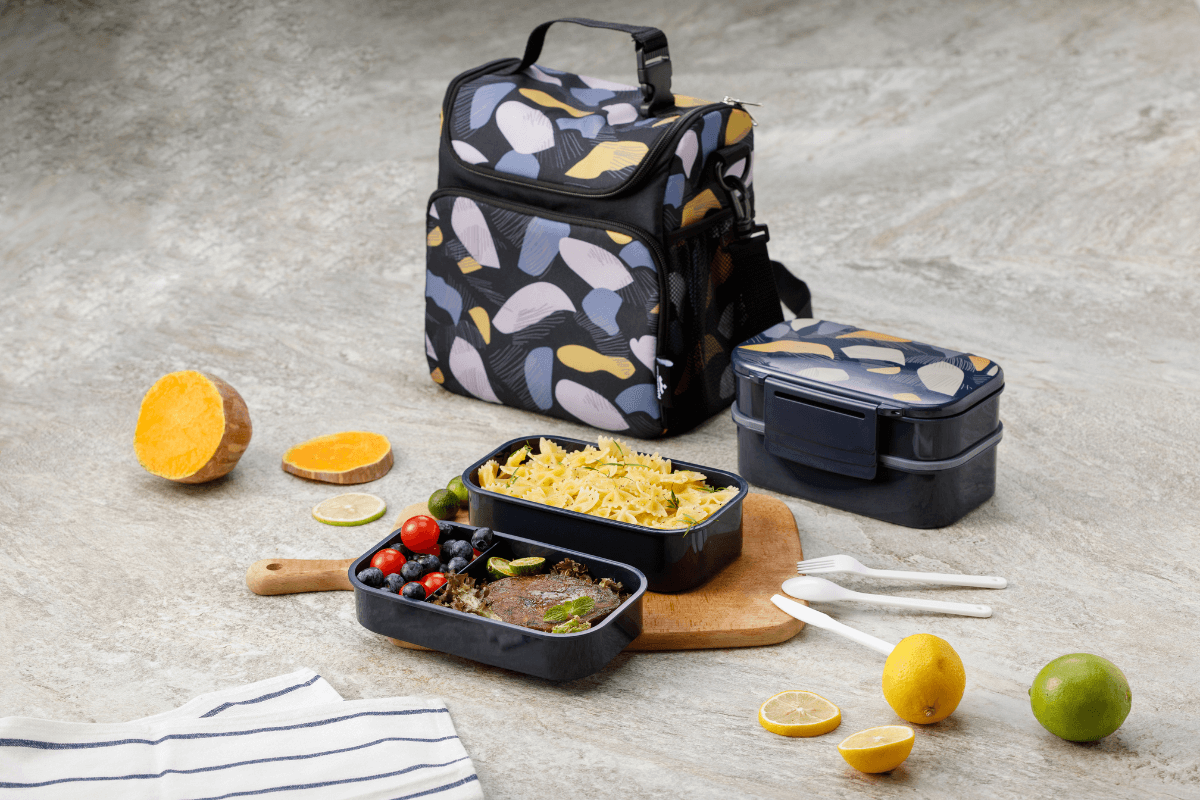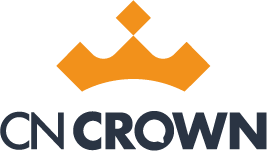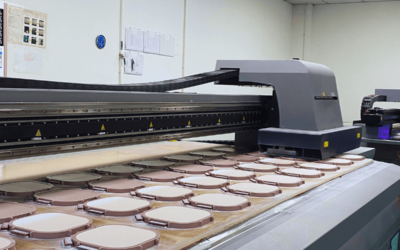How To Pack Lunch For Work? 12 Tips for Packing Food with Ease

Do you know the secret to living a long and healthy life?
It’s eating home-cooked meals!
It’s not only the key to a healthy lifestyle but also the key to saving money. Have you ever calculated how much you spend on lunch over the course of a
year if you spend $50 per week? It’s OVER $2000 ! ! !
However, packing lunch every day may seem to be a daunting task for many people, especially after a long day at work.
No worries. To make things easier, we are here with a guide to assist you in determining how to pack lunch for work.
So, without further ado, let’s get straight into our discussion.
Figure out why you bring lunch to work and what the benefits are
Packing lunch for work every day requires strong determination. If you don’t have a strong reason to motivate yourself to prepare the meals, you won’t be able to stay consistent with the lunch packing process.
That’s why, first, you must identify why you want to bring lunch to work and what benefits you hope to gain from it. Although there are numerous advantages to eating home-cooked food, let us discuss some of the most popular and important ones that you must know.
1. Home cooking helps maintain a healthy diet
Fresh and nutritious ingredients are essential for a healthy diet. In the case of home-cooked food, you have complete control over the ingredients you use. To make sure your diet complies with your health preferences, you can use your preferred meat, vegetables, spices, oil, or cooking techniques like grilling, steaming, or baking.
2. Keeps your body active and less prone to diseases
Restaurant meals often consist of unhealthy fats, sugar, excessive salt, and other harmful additives to enhance the flavor of the dishes. As a result of these harmful components, various problems such as indigestion, bloating, and heart disease occur.
However, if you avoid these foods and bring your lunch from home, you can keep your body safe from these harmful consequences. You will be able to maintain your health and fitness as well as be less prone to diseases.
3. Great for money management and helps save money
Packing lunch for work gives you more control over your food budget. Dining out or ordering takeout from restaurants is more expensive than carrying lunch from home.
Although you will need to spend money on groceries, the cost of buying the ingredients in bulk will be much lower than the total cost of the meal at the restaurant, allowing you to save some money at the end of the month.
Plan Your Meals in Advance
Creating meal plans ahead of time can save you time and energy while also keeping you motivated to carry lunch every day. The greatest benefit of advanced meal planning is that you do not have to think of meal ideas in the morning or the night before or deal with issues like running out of ingredients in the middle of meal preparation.
Let’s discuss how you can plan your meals in advance.
1. Create a Weekly Meal Plan
Start with creating a weekly meal plan. For that, consider your schedules, such as workload, meetings, social events, outdoor plans, or other activities that may influence your meal plan. Based on that, you can determine the type and number of meals you may need.
For instance, if you need 5 meals per week, 2 of them could be light meals like salads or sandwiches if you have back-to-back meetings or outdoor plans, while 3 of them could be heavy meals like rice, meat, pasta, etc. if you are about to eat lunch in the office.
This weekly plan is best created over the weekend. You can cook large quantities of food and store it in airtight containers. When the scheduled day arrives, you can take them out of the freezer and bring them to work with you.
2. Develop purchase lists based on recipe plans
The next task after creating the meal plan is creating the grocery shopping list. For that, list down the ingredients you would need to prepare your scheduled meals.
Check your pantry and refrigerator to see what ingredients you have in stock. You can create separate sections in your grocery list. One section contains the list of ingredients you need to purchase right away, and the other section contains the items you need to purchase next week. This will help you stay focused and avoid purchasing unnecessary items.
Note: Always keep a master grocery list with you so that you can quickly identify the items you need and save yourself the trouble of recalling the ingredients each week.
3. Consider Nutritional Needs
When planning your meals, make sure to include meals that will meet your nutritional requirements. Every day, your body needs a specific amount of macro and micronutrients, including carbohydrates, proteins, fats, vitamins, minerals, antioxidants, and so on.
Therefore, select meal items that have balanced portions of whole grains, vegetables, healthy fats, lean proteins, fruits, nuts, legumes, seeds, and other elements. However, to maintain a healthy calorie intake, it’s important to pay attention to portion sizes. You can use a food scale or measuring cups to ensure your meal portions are appropriate for your body’s needs.
Note: If you are unsure about your nutritional needs, consult with a registered dietitian for personalized suggestions and meal planning.
Prepare in advance: prefabricated or sub-assembled
After planning, comes preparation. Preparing your lunch ahead of time can save you more than half the time you would normally spend preparing your lunch every day. There are two approaches to preparing lunch in advance. Let’s explore these approaches.
1. Prefabricated lunch preparation approach
In the prefabricated approach, you have to prepare and assemble your meal in advance. This can be the most convenient method for you, as you can carry a pre-packaged meal with you to work.
Here are some tips for prefabricated lunch preparation.
● Cook large quantities of meals and divide them into individual portions.
● Store individual portions in separate containers. Make sure the containers have multiple compartments to keep all the items separate.
● Label each container with the cooking date to keep track of the freshness of the meal.
● Store the containers in the freezer and you will have ready-made meals to take with you whenever you want.
Note: To ensure a full and balanced lunch, you can pack pre-cut fruits, vegetables, or other snacks as sides.
2. Sub-assembled lunch preparation approach
In the sub-assembled approach, you have to prepare some of the lunch items in advance and leave other items to be prepared until you are ready to assemble your meal. Usually, the main component—such as the grilled chicken, rice, or other items—is prepared in advance, and other side dishes are prepared as the meal is put together.
Here are some tips for sub-assembled lunch preparation:
● Cook the main course of your meal in large quantities and store it in a container in the freezer.
● Cut vegetables, fruits, and other side items and store them in a separate container or reusable ziplock bags. Make sure to store the wet and dry side items separately, or else the dry items will get soggy.
● In the morning or the night before, you can take the containers out of the freezer and assemble them in the lunch box.
The sub-assembled approach offers customization flexibility, whereas, in the prefabricated method, you have to take the meals you have already prepared. You can test out both strategies to see which one suits you best.
Choose the Right Containers and Tools
Choosing the right tools and containers speeds up the meal preparation process and ensures that the meals stay fresh for a long time.
Let’s check out the tools and containers you should choose to pack your lunch.
1. Egg cooker for fast-cooking eggs
Eggs are one of the best sources of protein and other nutrients, such as vitamins A, E, B5, B12, iron, phosphorus, iodine, choline, Omega-3 fatty acids, antioxidants, and other nutrients that make the immune system strong.
An egg cooker can help you cook eggs faster in any form, whether soft-boiled, hard-boiled, or poached. This tool is specifically designed to make cooking eggs more convenient, time-efficient, and labor-intensive. Besides, the streaming technology allows you to cook eggs in the healthiest way possible.
2. Multipurpose beeswax wraps to cover both food & containers
Beeswax wraps are a sustainable alternative to plastic or aluminum foil. These reusable wraps can be used to wrap food items like sandwiches, burritos, fruits, bread, or cheese, as well as to cover containers.
The firm grip of these beeswax wraps makes the containers airtight. Most importantly, you can use them for a long time despite repeated washing. Besides, it contributes to the reduction of plastic use and is safe for the environment.
3.Lunch box & lunch box with an ice pack to carry food
The most important task is to choose the right lunch box. There are two options for lunch boxes. One is an ordinary lunch box. These boxes can be bento boxes or other single- or multi-compartment containers. And the other one is a lunch box with an ice pack. These are specialized containers that either come with an integrated ice pack or can be used with reusable ice packs.
If your workplace has a refrigerator, then a regular lunch box will be sufficient. However, if you don’t have any cooling sources, you must carry a lunch box with an ice pack to keep your lunch fresh.
Perishable items such as dairy products, salad, or rice can spoil if not stored at an appropriate temperature. In such cases, lunch boxes with ice packs can be helpful in maintaining the ideal temperature needed to properly preserve the food.
4.Ice pack to keep food fresh for a long time
No worries if you have already purchased your lunch box without an ice pack. You can purchase separate ice packs to keep food fresh for a long time. These reasonably priced compact ice packs come in various sizes that perfectly fit every size of lunch box and keep food cool in the summer heat.
5.Water bottle to keep yourself hydrated
Along with the lunch box, you must carry your own water bottle. Even though buying water may seem like a small expense, when you add up your monthly expenses, the total will be quite large. You can save that amount by simply carrying a reusable stainless steel, glass, or BPA-free plastic bottle. For convenient use, you can select a bottle with a built-in straw or a flip-top lid.
6.Lunch bag for safe and easy transportation
Last but not least, you will require a lunch bag to transport your lunch box safely to your workplace. It’s best if you use an insulated lunch bag. These types of bags are specially made to maintain the temperature of the food. You can use an ice pack in it to keep the food cool without the need for a refrigerator.
Note: When selecting a lunch bag, consider the design, size, and durability that best suit your needs and style preferences.
Prepare and Pack with Efficiency
Let’s learn the techniques for preparing and packing lunch efficiently.
1.Utilize Leftovers
After dinner, it is common to have a large quantity of leftovers, including rice, chicken, steak, fish, salad, and so forth. You can make delicious meals out of these leftovers, which will save you money and time compared to making lunches from scratch.
For instance, chop some tomatoes or other vegetables, grate some cheese, and season with ketchup, mustard sauce, mayonnaise, black pepper, or other spices. Mix these ingredients with the leftover meat or fish. You can use this mixture as a filling for sandwiches, burritos, tacos, or wraps.
Have leftovers in small quantities? Mix the leftovers with the eggs to make an omelet. Melt some cheese on top for an extra flavor boost. This way, you can repurpose leftovers and contribute to reducing food waste.
2.Pre-cut and Pre-portion
Pre-cutting vegetables or fruits and pre-portioning the lunch components is an excellent method for packing lunch with the least amount of time invested. For example, you have washed, peeled, and sliced all of the vegetables you would need for your meal over the weekend and stored them in an airtight container.
So, whenever you are cooking or preparing your lunch, all you have to do is take out the container and use the ingredients without devoting time to prepping. Similarly, fruits such as berries, grapes, avocados, and others can be cut into bite-sized pieces. When assembling your meal, just take the necessary amount, and you are good to go.
Moreover, to avoid the hassle of measuring portions each time, you can store your ideal proportion of food in multi-chambered containers. This will help you carry the exact amount of food you require without making you consume extra calories or waste your food.
Note: To minimize food waste, label the containers with dates and use the older prepared ingredients first.
3.Optimize Assembly
Assembling the lunch is an art that can either increase or decrease the appeal of the food. Here’s a guide to help you assemble your packed lunch effectively.
● Pack dry and wet ingredients separately. For example, sauces, dressings, and other liquid items should all be stored in airtight containers to avoid spilling. Use the dressing only when you are ready to eat.
● When layering salads, place the heavy ingredients, such as chicken, diced vegetables, and other ingredients, at the bottom and the leafy ingredients on top.
● If you are assembling multiple items in the same box, make sure your box has dividers. This will keep everything separate so that you won’t lose your appetite seeing all your items mixed together.
Note: Don’t forget to pack cutleries such as a spoon, fork, knife, napkin, etc.
Final thoughts on how to pack lunch for work
So far, we have discussed how packing lunch can help you keep both your body and your bank account in good shape, techniques for planning and preparing meals, tools you should consider using, and so on.
You may initially feel it takes too much effort to pack lunch. However, if you can stay consistent with proper planning and execute those plans, you will enjoy having homemade meals instead of store-bought meals.
Remember, there is no hard and fast rule for packing lunch. Some days, you can bring freshly prepared food, while other days, you can use leftovers.
Be flexible and show your creativity in assembling the food items. Most importantly, enjoy the process of preparing and eating delicious homemade lunches.
Related Posts
What Is UV Printing ? Know Its Process and Advantages
Thinking of using UV printing? Read on to learn about its working process, benefits, drawbacks, and more to determine whether it is the right one for you.UV printing is a revolutionary printing technology that has made commercial printing easy and faster. The durable,...
How To Successfully Develop and Produce Bento Boxes: From Idea To Market
Introduction Everyone around us is surrounded by carefully designed objects every day, including the bento boxes, lunch bags, cutlery, etc. that we use every day, all carefully designed by a person or team. From a creative idea to a commercial launch, this is what...
Healthy and Fun School Lunch Ideas: Best Lunch Containers and Accessories for Parents
Why Healthy and Fun Lunches Matter As parents, we often worry about providing nutritious meals for our children at lunchtime. But what some of us may not realize is that lunch is important for our little ones, too. Eating healthy and fun at school can have a positive...




0 Comments